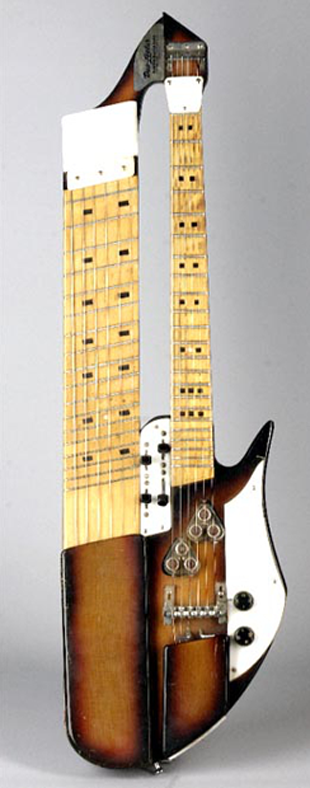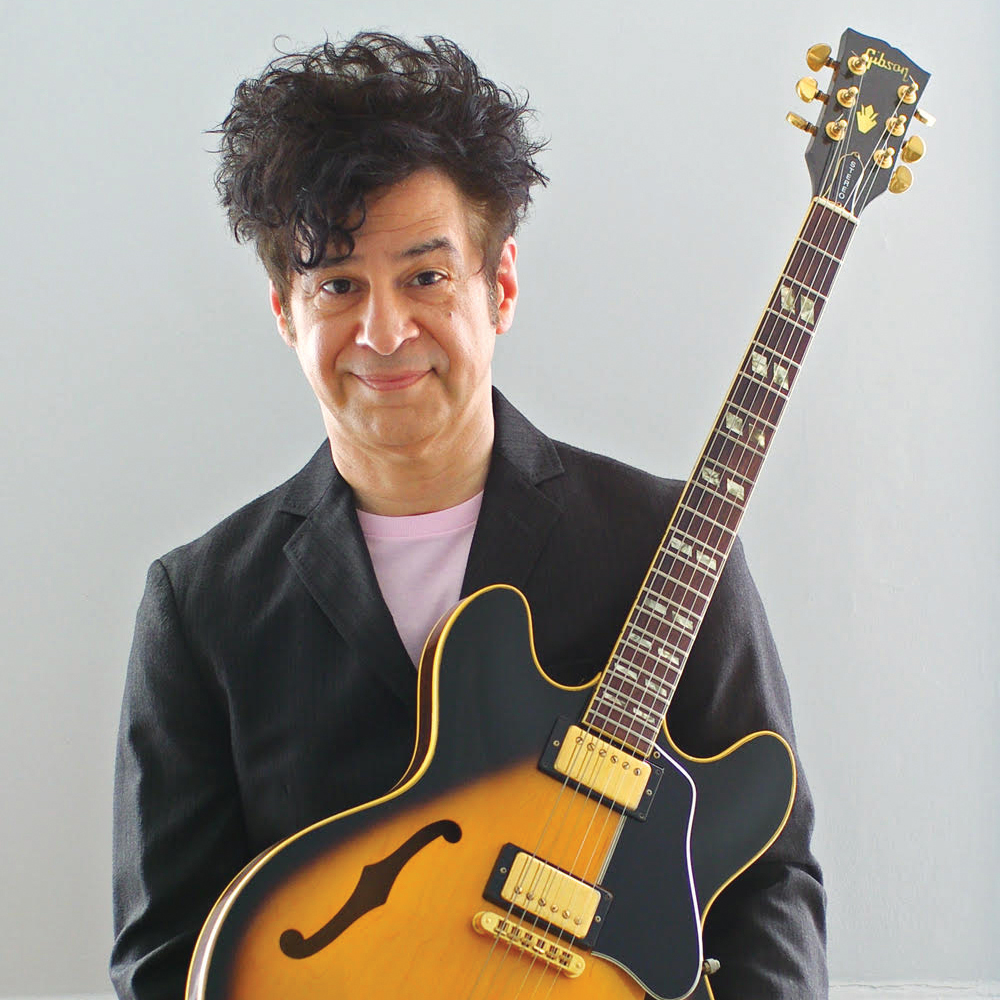Watch the Duo-Lectar Double-Neck "Touch Guitar" in Action Circa 1960 — Video

Everyone knows Eddie Van Halen didn’t invent two-handed tapping. He picked it up from Harvey Mandel, according to George Lynch.
For that matter, Roy Smeck, Harry DeArmond, Jimmie Webster, George Van Eps, Barney Kessel and Emmett Chapman (inventor of the Chapman Stick) are just a few guitarists who employed the technique in the decades before Ed and others, like Stanley Jordan, came along.
You can add Dave Bunker’s name to that list. As you can see in the vintage video clip below, Bunker was a tapping master, with each hand simultaneously working the two necks of his custom-designed electric guitar.
The demonstration below dates to around 1960 and shows Bunker playing his “Touch Guitar” on a TV show called Jubilee USA.
Hosted by country music star Red Foley, the weekly show debuted in 1955 as Ozark Jubilee and was the first U.S. network TV program to feature country music’s biggest stars. It was renamed Country Music Jubilee on July 6, 1957, and was retitled Jubilee USA on August 2, 1958, prior to Bunker’s appearance on it.
Bunker was living in Puyallup, Washington, in the Fifties when he saw Jimmie Webster perform on the University of Washington campus. Webster’s unique two-handed tapping technique interested Bunker, but after trying it himself, he found it was too limited. “While the tapping format used on a single-neck guitar could easily be used in pull-offs and tapping, two hands could still only play six strings with nine fingers,” he notes on the Bunker Guitars web site.
Bunker turned to his dad, an established guitar craftsman, to help him build a guitar with two necks, one for each hand. What they came up with looked unlike any guitar previously made.
Get The Pick Newsletter
All the latest guitar news, interviews, lessons, reviews, deals and more, direct to your inbox!
Dubbed the Touch Guitar, it featured a typical guitar neck with another neck about twice as wide positioned above it. Both were strung with six strings tuned to standard tuning; the left hand played the bottom neck, while the right played the top neck with the palm of the hand positioned over the neck rather than under it. The necks were intended to be played by fretting or tapping the strings rather than plucking or strumming them.
In 1958, Bunker patented the guitar as the Duo-Lectar and subsequently showed it at NAMM when the show was still held in Chicago’s Palmer House hotel. He recalls sharing space at the Standel amps booth with a young Barbara Mandrell and entertaining guitar greats like Chet Atkins, Mel Bay and Joe Maphis with his Duo-Lectar.
Bunker says Leo Fender approached him with an offer to buy the guitar and Bunker’s related innovations. Leo offered $20,000 and a three percent royalty—“which at the time was like a million dollars,” Bunker notes. But he turned down Fender and continued refining the guitar on his own.
According to a recent Gbase.com description of a 1960 Duo-Lectar, both necks sported a maple fingerboard, with 18 slanted frets on the bass neck and 23 straight frets on the standard. The guitar featured 12 handwound pickups, one for each string, arranged in groups of three. Controls included two volume knobs, two sliders for pickup selection and two for tone control. It also had two outputs, one for each neck.
As you’ve probably figured, the Duo-Lectar never caught on, but Bunker continued to develop the guitar, as well as standard guitars and basses and other guitar innovations, including the Sustainium tension-free neck system, bridge and pickup designs, electronic mute technology and more.
Today, he sells his own line of guitars and basses alongside the latest evolution of his Touch Guitar. Check them out when you’re finished enjoying the video. We’ve also included a newer video of Bunker performing and talking about the Duo-Lectar.
Christopher Scapelliti is editor-in-chief of Guitar Player magazine, the world’s longest-running guitar magazine, founded in 1967. In his extensive career, he has authored in-depth interviews with such guitarists as Pete Townshend, Slash, Billy Corgan, Jack White, Elvis Costello and Todd Rundgren, and audio professionals including Beatles engineers Geoff Emerick and Ken Scott. He is the co-author of Guitar Aficionado: The Collections: The Most Famous, Rare, and Valuable Guitars in the World, a founding editor of Guitar Aficionado magazine, and a former editor with Guitar World, Guitar for the Practicing Musician and Maximum Guitar. Apart from guitars, he maintains a collection of more than 30 vintage analog synthesizers.
“For years, the only 12-string acoustics I got my hands on, the necks always pulled off after a bit. I earned a lot of money replacing them!” Why one of the UK’s most prolific luthiers is a bolt-on acoustic die-hard
“It holds its own purely as a playable guitar. It’s really cool for the traveling musician – you can bring it on a flight and it fits beneath the seat”: Why Steve Stevens put his name to a foldable guitar










